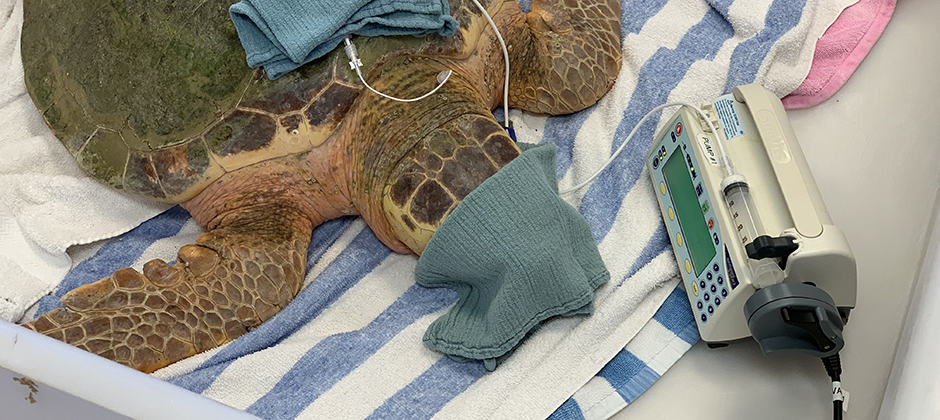Share this article
Drug overdose therapy cures poisoned sea turtles
Sea turtles suffering from the toxic effects of getting caught in red tide algae may benefit from therapy normally used to treat human drug overdose patients.
“It has vast positive consequences for a number of threatened and endangered marine animals to improve their recovery and survivability outcomes,” said Justin Perrault, director of research at the Loggerhead Marinelife Center (LMC) in Florida.
Red tide refers to algae blooms caused by large concentrations of concentrations of marine organisms known as dinoflagellates. They produce brevetoxins — neurotoxins that can impact or kill seabirds, fish, marine mammals and sea turtles. While it occurs naturally in Florida, blooms have been increasing in recent years in frequency, size and duration.
“They seem to be getting worse and worse,” Perrault said.
On the west coast of Florida, the toxic effects result in the stranding of Kemp’s ridley (Lepidochelys kempii) and loggerhead turtles (Caretta caretta), which make up 90% of the sea turtles that strand due to red tide toxin exposure. The other 10% are green sea turtles (Chelonia mydas).
“Within these blooms we can see up to hundreds of sea turtles that strand annually,” Perrault said. During the last red tide bloom from October 2017 through January 2019, almost 600 sea turtles were stranded on Florida’s west coast due to red tide intoxication, he said.
Other organizations in Florida, like Mote Marine Laboratory, Clearwater Marine Aquarium and the Clinic for the Rehabilitation of Wildlife (CROW), took in some of these stranded turtles, but it would often take months before they were healthy enough for release. Meanwhile, the turtles prefer a diet of high quality fish, crab and lobster that could set the organizations back thousands of dollars in feeding costs for a single sea turtle.
“These animals come in, they can be comatose, they have muscular tremors, disorientation and confusion,” Perrault said. “Being in that state for extended periods isn’t good news for an endangered species.”
One of Perrault’s colleagues, Charles Manire, LMC’s lead veterinarian, wanted to try a different method to speed up recovery time. Brevetoxins are lipid soluble, meaning they bind to fat, like many drugs that people overdose from. Manire reviewed the literature on the effects of intravenous lipid emulsion (ILE), a treatment used to treat drug patients who overdosed on drugs like antidepressants and stimulants, and decided to test it on turtles suffering from exposure to red tide.
Trials on red-eared slider turtles (Trachemys scripta elegans) were conducted before testing the method on endangered sea turtles and received great results — the symptoms of red tide poisoning nearly disappeared immediately.
“All the vets are reporting that the turtles are recovering within 24 hours,” Perrault said.
The researchers still haven’t published their findings, and Perrault said that with funding from the Morris Animal Foundation, they are currently analyzing plasma samples before and after the treatment to confirm that the brevetoxins are gone, but he is excited about the success of the new treatment.
They haven’t tracked the long-term success of the animals they released yet with satellites, so it’s unclear how the turtles fared after release without further research.
Meanwhile, CROW is also testing this method on seabirds that have been affected by red tide. Perrault said the use of this drug overdose treatment is great because it helps get animals back into the sea quickly and saves dollars for cash-strapped nonprofits that can then concentrate on other wildlife.
Header Image: A loggerhead sea turtle that suffered from tremors and lack of coordination due to exposure to red tide and blue-green algae is treated with intravenous lipid emulsion. ©Loggerhead Marinelife Center








